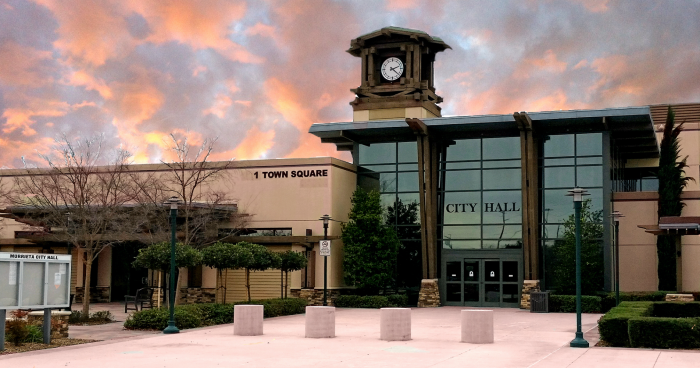Solution-Focused Strategies in the Workplace:
The Mad Dash

Rick Metrick, a Licensed Professional Counselor (LPC) has been in private practice for thirty years. For the past twenty years, he has served as founder and director of Total Life Counseling in Beckley, West Virginia. He has authored four books and is the pastor of a local church in his community. He and his wife Karen are the proud parents of five children and twelve grandchildren. You can visit his website at www.TLCWV.com.
Time of the Mad Atom
This is the age
Of the half-read page.
And the quick hash
And the mad dash.
The bright night
With the nerves tight.
The plane hop
With the brief stop.
The lamp tan
In a short span
The Big Shot
In a good spot.
And the brain strain
The heart pain.
And the cat naps
Till the spring snaps–
And the fun’s done!
Sounds like an accurate description of twenty-first century life! You might be surprised to know it was first published in The Saturday Evening Post under the title “Time of the Mad Atom” in 1949. That’s right, seventy years ago. Some things never change. My guess is your life is proof.
The workplace is constantly evolving, and employees are expected to seamlessly adapt. Although change is inevitable, it is not always welcomed. Changes at the workplace affect more than our work lives. They impact our families, self-care, relationships and much more.
Blindsided
The demands of being a Staff Operations Officer were increasing and Anthony was in the last year of his five-year contract. He felt threatened by internal competition. The Directorate of Operations (DO) office demanded creative solutions to increasingly complex operational problems. He was spending more and more time overseas and family life was suffering. Exercise, fishing and Saturday evening with friends were a faint memory. The spring of Anthony’s mad dash was about to snap.
Nicole considered herself blessed with a supportive supervisor and “the perfect job.” However, six months ago she was blindsided by her boss’s promotion and replaced by a less supportive more confrontational boss. Her job description was quickly changed for which she was overqualified and underappreciated. Discontent and unfulfilled, she felt trapped and hopeless. Nicole’s spring snapped and she found herself in the ER with chest pains. An intern told Nicole that her ECG was unremarkable and suggested she might be having panic attacks, gave her the name of a local therapist and a prescription for Xanax.


Success cannot be built on a foundation of past failures.
RICK METRICK
Solution-Focused Strategies
Empathic listening and emotional support would do little good for either Anthony or Nicole. They needed more, solution-focused interventions. What follows is a Strength-Based and Solution-Focused1 strategy.
- The first and most important step in SFBT is Identifying Your Strengths. In order to advance through adversity, Anthony and Nicole would need to identify, appreciate and implement their strengths. Both were aware of the many excellent and readily accessible inventories used to assist employees in discovering their gifts.
Anthony chose the CliftonStrengths2 assessment to identify strengths in four distinct domains (strategic thinking, relationship building, influencing and executing). Of the 34 themes on the StrengthFinder, Thomas discovered that his top five strengths were Ideation (fascinated by ideas), Learner (a great desire to gain knowledge), Empathy (sensing and experiencing the feelings of others), Achiever (possessing great stamina and working hard) and Relator (excelling by working with people). He downloaded the Gallup app to further understand and sharpen his strengths.
Nicole chose to research the six domains of resiliency. After viewing a free demo, she chose to utilize Driven’s3 virtual coach to build resilience. Like the CliftomStrengths, Driven is scientifically researched and grouped into six domain specific factors that enable a person to advance despite adversity. After viewing a series of interactive videos and responding to insightful statements, Nicole discovered she had two strong domains–Vision (having a sense of purpose and a knowledge of what she wanted to achieve) and Reasoning (creative and innovative problem-solving skills, the ability to anticipate and plan). She also confirmed that Composure (regulating emotions and interpretation bias) was her greatest area of need. In time, she would learn to better manage her anxiety and people pleasing mindset.
Equipped with a working knowledge of their strengths, Andrew and Nicole were able to determine what they wanted to change about their current situations and how to use their strengths to improve their lives.
- The next step is Exploring Past Successes. An important component of Solution-Focused Therapy is remembering past successes. We tend to give an inordinate amount of attention to our miscues and minimize our achievements. Tomorrow’s successes are based on exploring yesterday’s successes today. “What were your successes?” “What caused you to be successful?” “How can you use past successes for future successes?”
Success cannot be built on a foundation of past failures. When it comes to past failures dwelling on the past destroys the present and delays the future. Andrew realized his natural lean towards failure-thinking. “Things never go my way,” “I will never be good enough” and “This is the worst thing ever,” kept him from expanding, growing and self-care. As he reviewed his history of successes he realized that a success-mentality always preceded successful undertakings. After developing a list of “Stinkin Thinkin” and another of “Successful Thinkin,” he promptly destroyed the first and carried the second wherever he went for review and a reminder that he held the key to successful maneuvering through the complexities of life.
- A proper appraisal of current experience means Discovering and Highlighting Exception Thinking. When Nicole evaluated her typical 8-hour workday, she realized her frustrations were limited to two or less weekly interactions lasting no more than a total of 10 minutes. Her discovery was enlightening. She would no longer allow less than .5% of weekly interactions poison 99.5% of her work week.
Rather than search exceptions to the rule, Anthony focused his attention on opportunities he had not but could have taken to create exceptions. His exception thinking was more futuristic and creative. He concluded that he compromised potential exercise and self-care time when overseas in the hotel lounge or vegging in his room mindlessly watching sporting events.
- The Miracle Question and Scaling Questions help Facilitate a Positive Vision for the Future. The miracle question for Anthony was “imagine when you go to sleep tonight a miracle happens and you wake up tomorrow deprogrammed.” The beliefs “things never go my way,” “I will never be good enough” and “this is the worst thing ever” are erased from your mind. “What would your life look life?” He had never thought of his life in this way. The knowledge that his problems do not have to follow him into the future were freeing. Anthony realized that resolving his misbeliefs and the unpleasant emotions they stimulated was more important than his increasingly demanding work schedule. However, resolving misbeliefs and unpleasant emotions take time. He developed a way of measuring to know how he was making progress by using a scale of 1-10. Level 1 was the realization, he was there. He decided Level 2 would be consciously challenging his irrational beliefs when they arise. Levels 1-10 helped him to see his progress.
The miracle question awakened hope in Nicole. The miracle she needed was no longer out of her control. Eventually, she moved from feeling victimized and helpless to being empowered. She discovered she had the power to change her beliefs and behaviors, which would positively impact her emotional state. What happened to her was not as powerful as how she processed it and responded to it. Nicole developed a way to scale the power of her emotions–both unpleasant and pleasant. She created a list of desirable and undesirable emotions. Every evening Nicole rated the power and prevalence of each emotion. She also scaled her ability to dispute the irrational belief of having to please others and coveting words of affirmation from her new superior.
- Compliments, Affirmations and Celebrations. SFBT therapists aid the patient in celebrating their successes and encourage them to appreciate what they did differently that facilitated success. Neither Anthony nor Nicole chose therapy, but they did collaborate with significant others. These SOPs (Significant Other People) were encouraging, optimistic and celebrated their successes with compliments and affirmations.
The Spring does not Have to Snap
Adversities stretch the springs of our lives, but they do not have to snap them. Identifying your strengths, exploring past successes, discovering and highlighting exception thinking, positive vision for the future and compliments, affirmations and celebrations work together to facilitate a resilient response to the adversities of life. One of the cryptic sayings in the Bible reads, “my strength is made perfect in weakness.” 4 Anthony and Nicole would soon discover that their strengths become stronger through adversities. Solution-Focused Strategies acknowledge that obstacles have the potential of becoming opportunities for personal growth.
______________________________________
1 Solution-Focused Brief Therapy (SFBT), also called Solution-Focused Therapy, Solution-Building Practice therapy was developed by Steve de Shazer (1940-2005), and Insoo Kim Berg (1934-2007) and their colleagues beginning in the late 1970’s in Milwaukee, Wisconsin. As the name suggests, SFBT is future-focused, goal-directed, and focuses on solutions, rather than on the problems that brought clients to seek therapy (Institute for Solution-Focused Therapy).
2 You can take the CliftonStrengths Assessment (177 paired statements which you choose the one that describes you the best) and get your personalized results at www.gallup.com.
3 Resilience uncovers your ability to be flexible, adaptive, optimistic, and learn from your experience to become stronger and thrive” (www.home.hellodriven.com). The site and app allow for 24/7 chat on demand and their AI is an amazing and complex logic that personalizes conversations that helps you achieve positive behavior changes.
4 2 Corinthians 12:9, Holy Bible. King James Version, 1611.

CAREER ADVICE

GOV TALK




